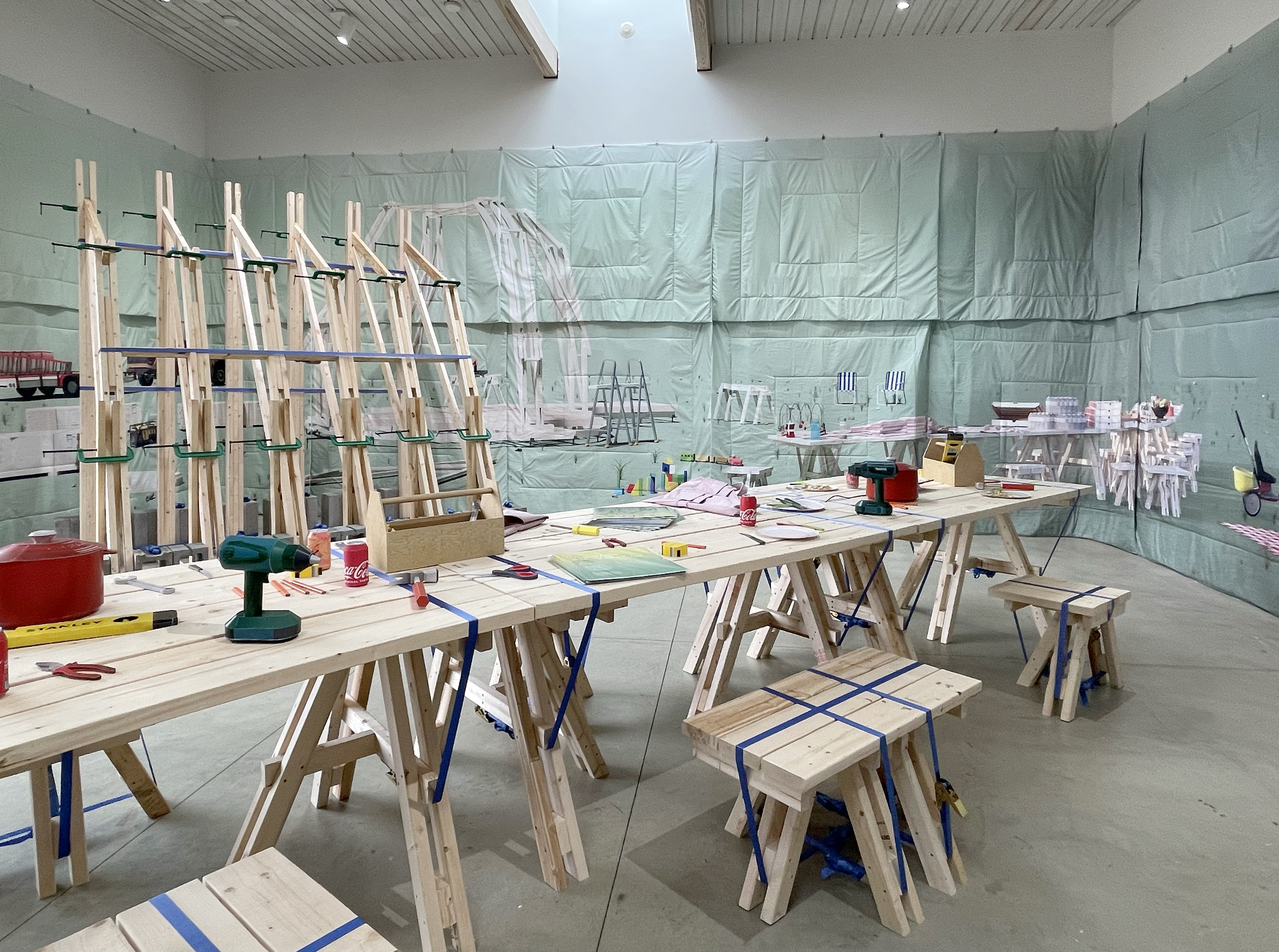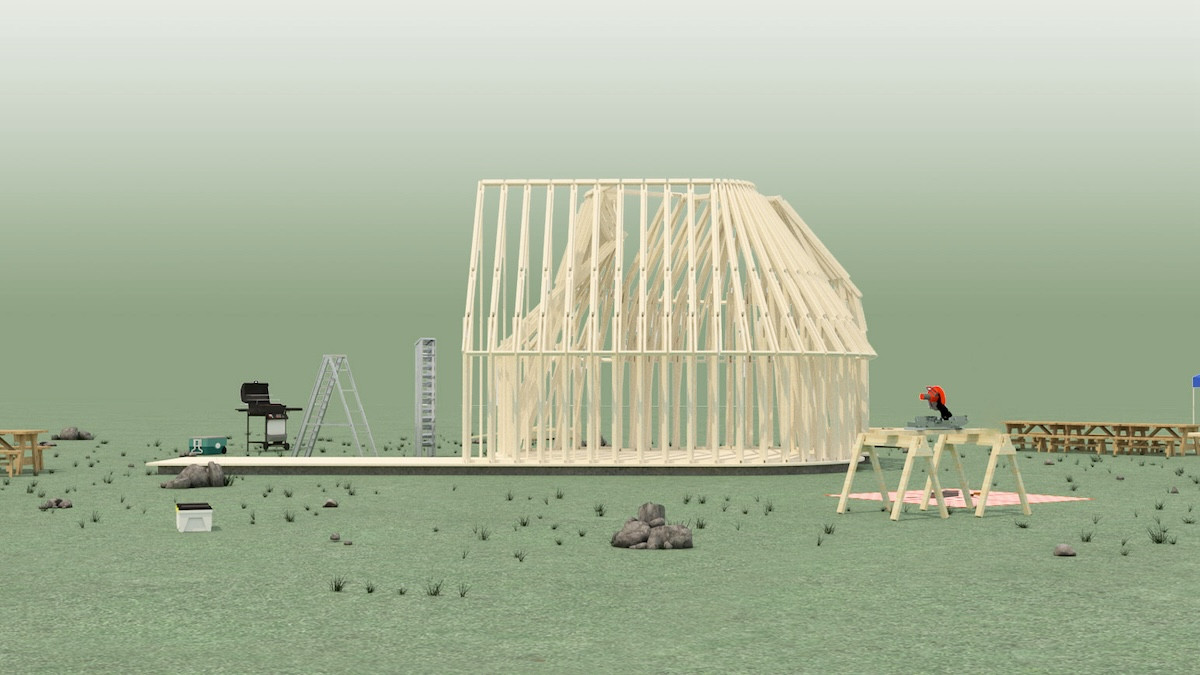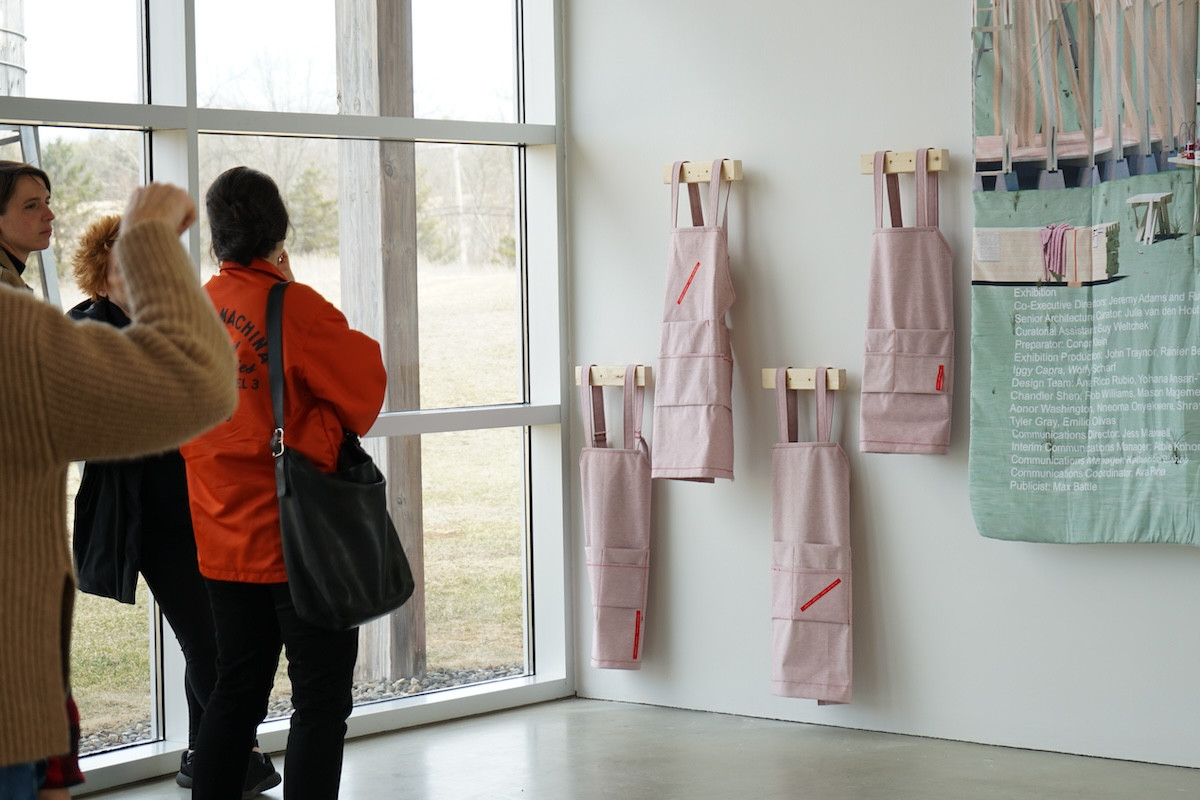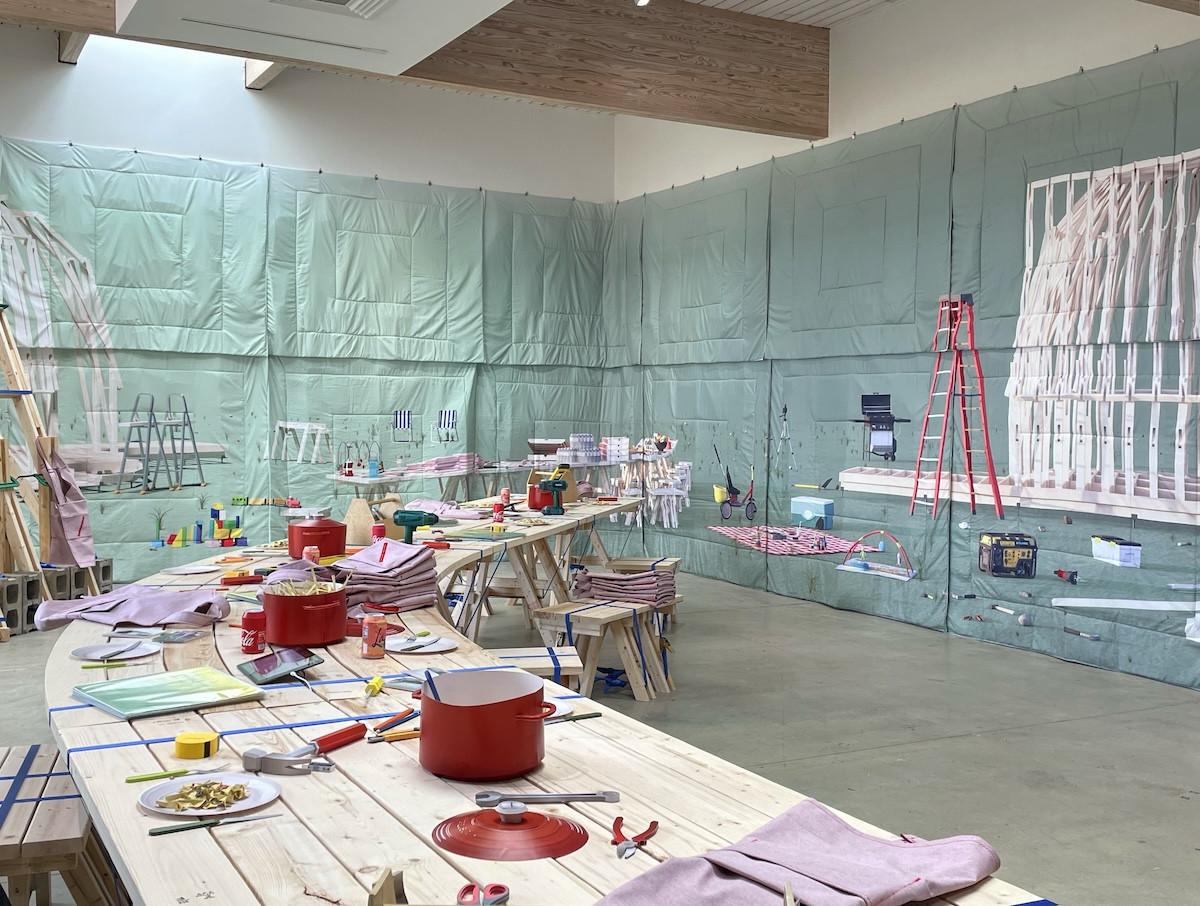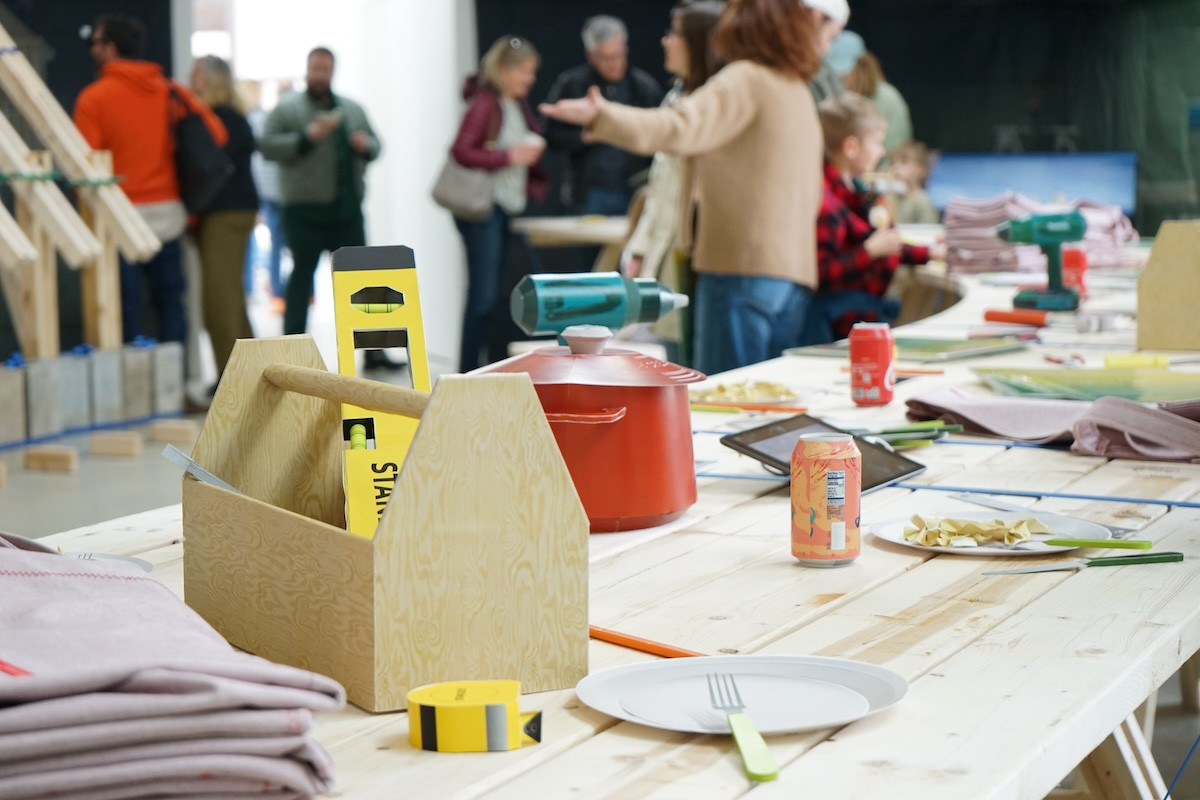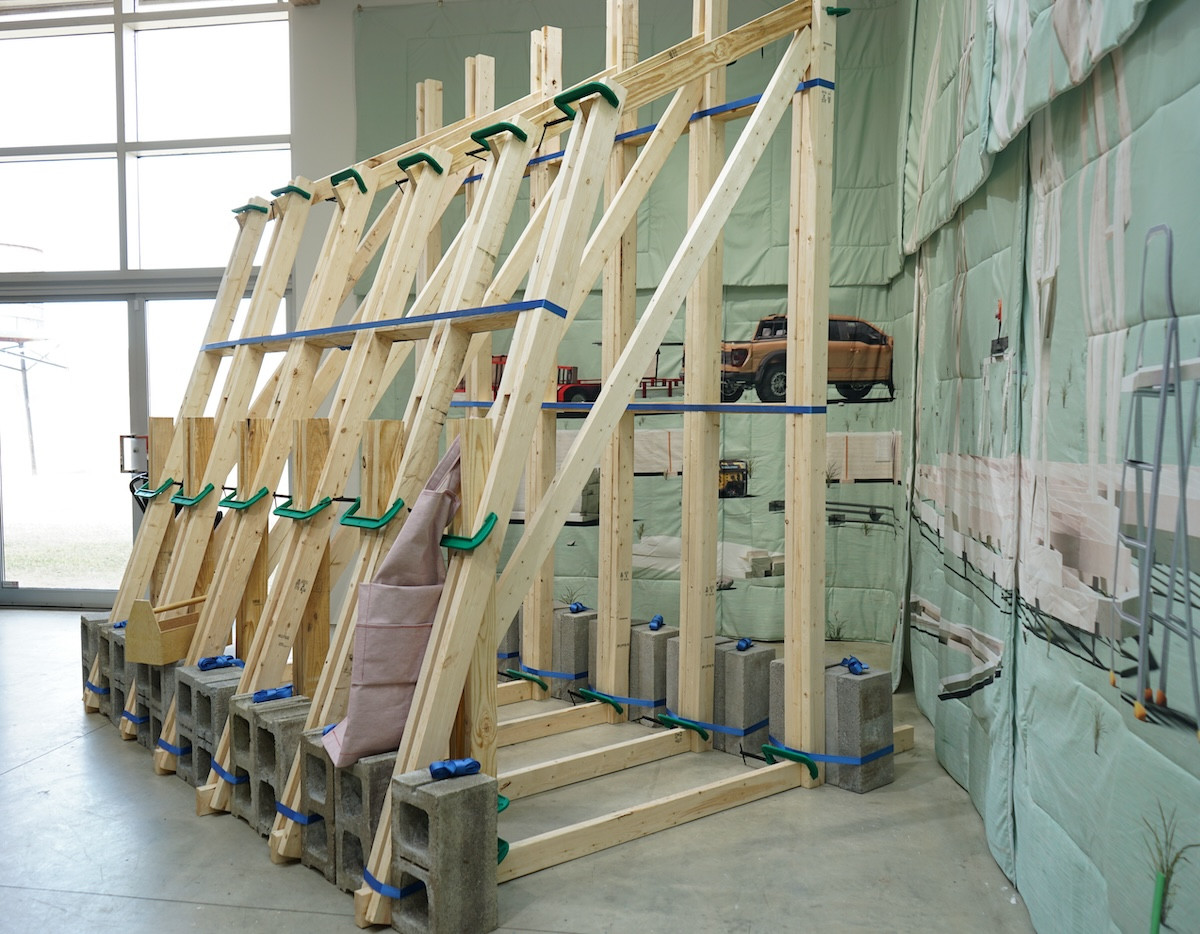“Staging Area” at Art Omi Deconstructs the Meaning of Construction
"Staging Area" isn't just about what's being built. It's also about the value of labor and community.

"Staging Area" isn't just about what's being built. It's also about the value of labor and community.
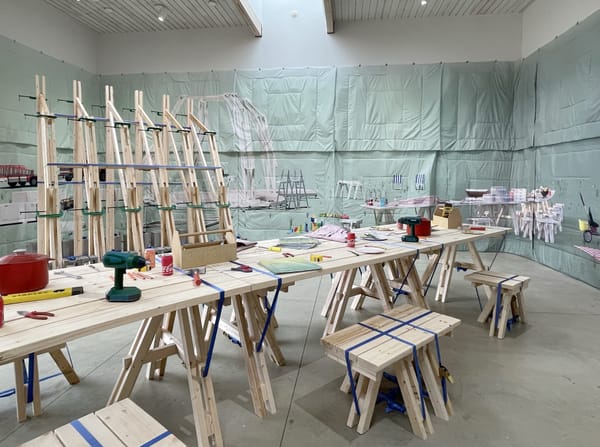
"Staging Area: A Barn Raising in Two Parts," an exhibition by architect, artist, and Princeton professor Erin Besler at Art Omi, intertwines the historic American tradition of communal barn raising with the contemporary artistic vernacular of existential deconstruction. This project invites visitors to reflect on the shared histories and collective emotions embedded within the wooden frameworks of barns, exploring the liminal spaces between their beams and boards.
The exhibition unfolds in two phases: an indoor gallery installation runs through June 8, and a participatory outdoor barn-raising will take place in late July. The gallery showcases constructed barn sections and features a communal table, symbolizing the social aspects of barn raising where meals and collaboration are integral. (The opening on March 15 included a dinner.)Visitors can engage with model-making kits, becoming part of the work itself.

Art Omi’s senior architecture curator and residency program director, Julia van den Hout, describes "Staging Area" as a project that challenges traditional boundaries within architecture. "The field of architecture has long drawn a clear line between design as intellectual labor and construction as a hands-on technical process," van den Hout says. "This project bridges that gap, emphasizing collaboration and knowledge sharing."
Barn raising has historically been a communal endeavor, where neighbors gather to construct a vital structure for their peers— a profound expression of cooperation and mutual aid. Besler draws inspiration from this tradition to challenge conventional notions of architectural authority and expertise. She emphasizes the ingenuity found in everyday constructions, particularly barns, which were often erected without formal architectural input. The work is not intended to diminish architectural rigor, but instead calls on the viewer to raise the value of labor to the same level.
For Besler, "Staging Area" is an opportunity to redefine what is considered architecture and who gets to participate in its creation. "Historically, barns were built through oral traditions and hands-on knowledge, practices that architecture as a field often overlooks," she says. "I’m interested in expanding the definition of architecture beyond formalized expertise to include the skill and ingenuity present in everyday construction."
The project also engages with the visual and historical significance of barns in American architecture. The exhibition includes large panoramas that depict the barn frame as it will appear in the summer installation. Visitors will also find archival images of regional barns from the Historic American Building Survey, a WPA-era project that documented significant architectural forms across the country.
The second phase of the project—the physical barn raising—will be an interactive event where community members are invited to participate. "We want people who visit the gallery to return in the summer and help build parts of the barn with us," says Besler. "It’s not just about the final structure but about the process, the gathering of hands and knowledge that brings it to life."
Art Omi is collaborating with builder Bill Hudson for this phase, ensuring that the assembly process aligns with the project’s themes of community and shared labor. "This isn’t just about putting up a structure," says van den Hout. "It’s about making construction a space for engagement rather than just execution."

Beyond its architectural focus, "Staging Area" also engages with broader cultural and historical discussions. Besler notes the shifting roles of barns in American history—from communal agrarian spaces to sites of feminist and back-to-the-land movements in the 1970s. "Barns have long been places where traditional structures—whether in labor, gender roles, or design—break down and are redefined," she says.
By bringing barn raising into a contemporary artistic and architectural dialogue, "Staging Area" invites visitors to rethink the relationship between architecture, expertise, and collective action. As Besler puts it, "Everyone who visits will bring their own perspective—whether they’re interested in barns, architecture, tools, or just a good meal. That’s what makes this project exciting."
By juxtaposing communal construction practices with avant-garde architectural exploration, "Staging Area" encourages contemplation of the narratives and shared experiences that reside within the humble barn's structure, inviting a deeper appreciation of the spaces that connect us.
